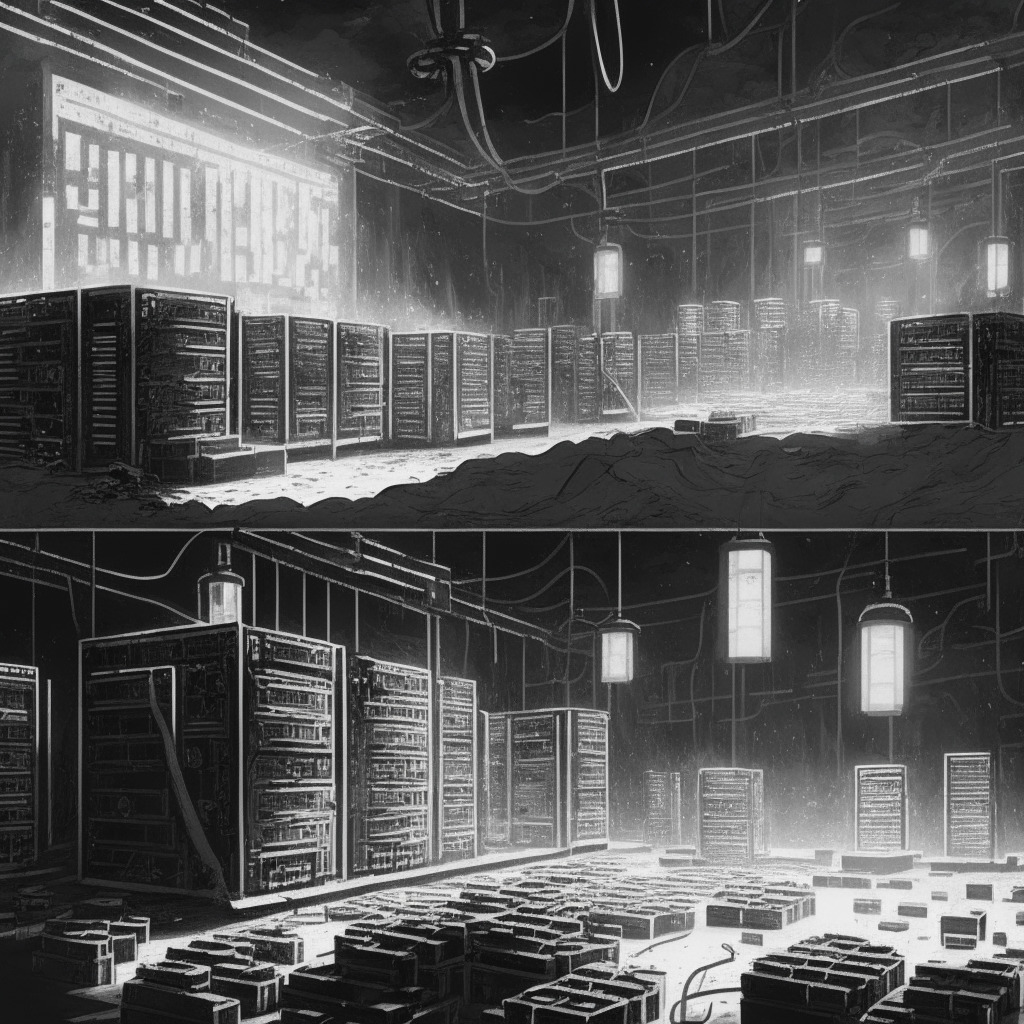Big news in the world of cryptocurrecy surfaces as Bitcoin ASIC manufacturer, Bitmain, allegedly pauses October salary payouts to its employees. This decision is said to be driven by the company’s struggle to achieve a net positive cash flow, chiefly in the orders of their new Bitcoin ASICs. Unfortunately, this move could temporarily affect the livelihoods of the firm’s workers by removing the standard “bonuses and incentives” from their pay packages, along with implementing a 50% reduction in their base salaries.
Established in 2013, Bitmain emerged from Beijing to become one of the largest manufacturers of Bitcoin mining ASIC, boasting an estimated 70% market share during its prime time. The firm’s industry-leading Antminer series continues to be a top choice in terms of hash rate computations for mining Bitcoin. However, this recent development adds another layer of uncertainty over Bitmain’s future operations.
In contrast, Bitcoin miner Hive recently procured 2,000 Bitmain S19 XP ASIC miners for deployment in its proceedings. Despite Bitmain’s financial dilemmas, Hive avows that their mining rigs, including the newly integrated models, generate a combined $80 per megawatt hour in revenue. Betting on Bitmain’s mining technology may yet prove beneficial for the mining operations at Hive.
In a sombre turn of events earlier this year, Jihan Wu, the co-founder of Bitmain, acquiesced in a contentious ownership dispute with co-founder Micree Zhan by stepping down from his positions as chairman and CEO. This settlement came with a hefty tag of $600 million, for which Wu sold his ownership stake to Zhan. Initially, Bitmain had indulged in aspirations of an initial public offering predicted at a $5 billion valuation by late-2022, though the recent turbulence in the market could have thwarted these plans.
The news of Bitmain’s salary freeze paints a gloomy picture for the future of the company, especially for its employees. This move elucidates the challenges faced by companies manufacturing Bitcoin ASICs, grappling with the volatility of cryptocurrency markets and sometimes severe financial burdens. For Bitmain, its once leading market share is now at risk, potentially threatening the mass adoption of Bitcoin and the overall growth of the crypto market.
On the flip side, Hive’s acquisition of ASIC miners signifies unwavering confidence in Bitmain’s technology. They rely on it to bolster their revenue generation, setting an example for potential buyers. This agreement underlines that, despite Bitmain’s financial strain, the quality and capability of its products remain undisputed. The upcoming months will reveal whether Hive’s calculated gamble will pay off and whether other mining firms follow suit. As for Bitmain, its survival hinges on robust financial turnaround strategies and effective management of resources.
Source: Cointelegraph




